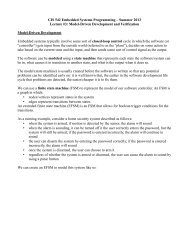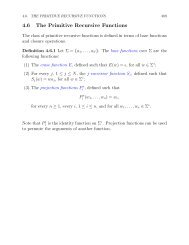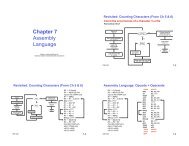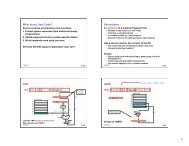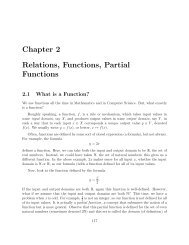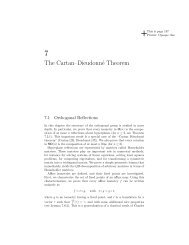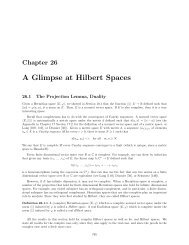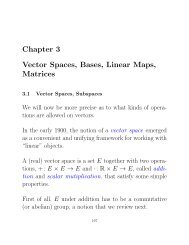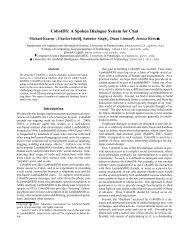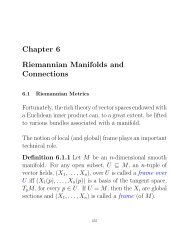Chapter 3 Context-Free Grammars, Context-Free Languages, Parse ...
Chapter 3 Context-Free Grammars, Context-Free Languages, Parse ...
Chapter 3 Context-Free Grammars, Context-Free Languages, Parse ...
You also want an ePaper? Increase the reach of your titles
YUMPU automatically turns print PDFs into web optimized ePapers that Google loves.
52 CHAPTER 3. CONTEXT-FREE GRAMMARS AND LANGUAGES<br />
Remark: Note that we are not requiring that an ω-continuous function f: A1 → A2<br />
preserve least elements, i.e., it is possible that f(⊥1) =⊥2.<br />
We now define the crucial concept of a least fixed-point.<br />
Definition 3.7.3 Let 〈A, ≤〉 be a partially ordered set, and let f: A → A be a function. A<br />
fixed-point of f is an element a ∈ A such that f(a) =a. The least fixed-point of f is an<br />
element a ∈ A such that f(a) =a, and for every b ∈ A such that f(b) =b, thena ≤ b.<br />
The following lemma gives sufficient conditions for the existence of least fixed-points. It<br />
is one of the key lemmas in denotational semantics.<br />
Lemma 3.7.4 Let 〈A, ≤〉 be an ω-chain complete poset with least element ⊥. Every ωcontinuous<br />
function f: A → A has a unique least fixed-point x0 given by<br />
x0 = f n (⊥).<br />
Furthermore, for any b ∈ A such that f(b) ≤ b, thenx0 ≤ b.<br />
Proof . First, we prove that the sequence<br />
⊥ ,f(⊥) ,f 2 (⊥), ..., f n (⊥), ...<br />
is an ω-chain. This is shown by induction on n. Since⊥ is the least element of A, wehave<br />
⊥≤ f(⊥). Assuming by induction that f n (⊥) ≤ f n+1 (⊥), since f is ω-continuous, it is<br />
monotonic, and thus we get f n+1 (⊥) ≤ f n+2 (⊥), as desired.<br />
Since A is an ω-chain complete poset, the ω-chain (f n (⊥)) has a least upper bound<br />
Since f is ω-continuous, we have<br />
and x0 is indeed a fixed-point of f.<br />
x0 = f n (⊥).<br />
f(x0) =f( f n (⊥)) = f(f n (⊥)) = f n+1 (⊥) =x0,<br />
Clearly, if f(b) ≤ b implies that x0 ≤ b, thenf(b) =b implies that x0 ≤ b. Thus, assume<br />
that f(b) ≤ b for some b ∈ A. We prove by induction of n that f n (⊥) ≤ b. Indeed, ⊥≤ b,<br />
since ⊥ is the least element of A. Assuming by induction that f n (⊥) ≤ b, by monotonicity<br />
of f, weget<br />
f(f n (⊥)) ≤ f(b),<br />
and since f(b) ≤ b, this yields<br />
f n+1 (⊥) ≤ b.



